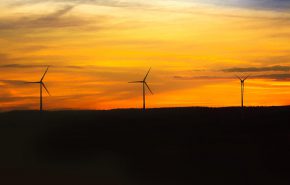Predictions are mixed on forecasts for the upcoming winter; some say we’ll see the return of the polar vortex, and NOAA’s National Weather Service indicates a 65% chance of El Nino emerging in fall and early winter. Others are less convinced, calling for milder weather and light snow. After last winter, the energy industry has its eye on the weather trends, as does GAI. In a follow up to our earlier article, here are some trends we’re seeing in our major energy markets…
1. Natural gas
Prices were up nearly 75% in some regions, and supplies were at a record low (778 Bcf below last year’s level) as we came out of last winter’s polar vortex. Effects were seen most drastically in the competitive retail energy market. Some major players dissolved or sold their retail energy marketing businesses. This may have been influenced by the increased risks of maintaining those businesses. When weather events like the polar vortex cause natural gas prices to spike, retail providers are still bound to offer customers predictable prices, so retailers take the hit.
After the brutal winter, there was concern that we would not be able to adequately restock our natural gas supplies. But cool conditions this summer are curbing demand, and higher supply is leading to higher than usual injections into natural gas storage. New pipeline capacity in the northeast is enabling more gas from Marcellus and Utica shale plays to enter the market, and with aggressive injections, the stocks should be replenished by October.
2. Electric Power
Last winter, as demand for natural gas went up, so did demand for electricity. PJM Interconnection, the largest grid operator in the U.S., set a new winter peak record at 139,069 megawatts. PJM and other operators across the country were able to survive the cold without major outages, but given the forseeable changes in the mix of power generation sources (i.e., natural gas, coal-fired, nuclear, and renewable), some are skeptical about the grid’s ability to continue to handle such extreme weather events.. In response, PJM is examining market capacity issues and performance problems.
3. Coal
During the coldest days last winter, coal-fired power plants also experienced weather-related failures, from frozen stockpiles to ignition issues to frozen pipes. Many aging coal plants were brought back online to meet demand. However, with the new, more stringent carbon rules passed by the EPA earlier this year, many observers expect that coal-fired power plants will continue to be retired and very few new ones will be built. Feelings are mixed regarding how this will affect the grid.
4. Nuclear
Nuclear power plants fared well during the cold winter, actually producing more energy as a result. Steam-powered plants depend on the temperature difference between the steam and the external temperature to produce power. According to the Nuclear Energy Institute, the U.S. Nuclear fleet’s performance during the polar vortex demonstrated their value.
5. Renewables
With strong storms and high winds this winter, wind power helped to supplement supply and contributed to grid reliability and price stability for customers. Analysts expect to see a continued increase in the sector, however some warn against relying on solar and wind as “baseload” providers. The technology is just not advanced enough to be reliable yet.
Looking back on the past few months, we can draw some conclusions about how the polar vortex events affected the energy industry. After some concern, the natural gas industry was able to replenish stocks for the upcoming winter. The electric power industry was prompted to reevaluate some of its policies to ensure a more reliable grid in the event of future polar vortex-like events. The coal industry was able to react quickly to bring facilities online to meet demand. Nuclear energy was able to regain some public support after much skepticism following the Fukushima disaster. And renewables also helped supplement supply, prompting further inquiry into their feasibility and broader acceptance.
Stay tuned as GAI continues to watch and report on these trends as we head into the fall season.


